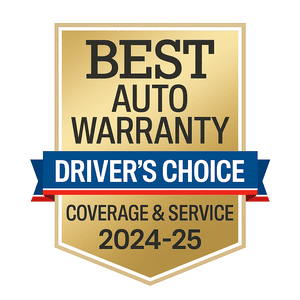Switching car insurance might seem like a hassle, but it can save you hundreds of dollars each year. Whether you’re looking for better coverage, lower premiums, or improved customer service, learning how to switch car insurance the right way ensures you stay protected and avoid any coverage gaps. This guide will walk you through everything you need to know about making a smooth transition to a new car insurance provider.
Why You Might Want to Switch Car Insurance
There are many valid reasons to consider switching your auto insurance provider. Some of the most common include:
- Lower premiums: You found a better deal with another company.
- Improved coverage: You need more comprehensive or tailored insurance.
- Poor customer service: You’re unhappy with the support from your current insurer.
- Life changes: You bought a new car, moved to a new state, or got married.
- Discount opportunities: A new provider offers bundling, safe-driver, or other savings you qualify for.
When Is the Best Time to Switch Car Insurance?
While you can technically switch at any time, some moments are more ideal than others:
- Before your current policy renews: Avoid cancellation fees and overlapping policies.
- After a major life event: Like moving or adding a new driver to your policy.
- When your rates increase: Especially if you haven’t had any new claims or tickets.
How to Switch Car Insurance: Step-by-Step
Step 1: Evaluate Your Current Coverage
Before shopping for a new provider, review your current policy. Understand the types and amounts of coverage you have, your deductibles, and any additional benefits included. This helps you compare apples to apples when reviewing quotes.
Step 2: Shop Around and Compare Quotes
Use online comparison tools or contact insurance agents directly to get quotes from multiple companies. Be sure to provide the same details to each provider, including:
- Your vehicle details (make, model, year, VIN)
- Your driving history
- Your desired coverage levels
- Your mileage and usage habits
Request at least 3-5 quotes to find the best balance of price and protection.
Step 3: Check for Discounts and Incentives
Many insurers offer discounts that can significantly reduce your premium. When learning how to switch car insurance, be sure to ask about:
- Safe driver discounts
- Good student discounts
- Multi-policy (bundling) discounts
- Automatic payment or paperless billing discounts
- Low mileage or usage-based programs
Step 4: Choose a New Policy
Once you’ve compared policies and discounts, select the provider that offers the best combination of coverage, cost, and customer satisfaction. Make sure to read the fine print, including cancellation policies and any fees.
Step 5: Set a Start Date and Buy Your New Policy
When you purchase your new policy, schedule it to start the same day (or the day before) your old policy ends. This prevents any lapse in coverage, which could leave you vulnerable or impact your driving record.
Step 6: Cancel Your Old Policy
Once your new policy is active, contact your old insurer and cancel your previous policy. Request written confirmation of the cancellation. Avoid canceling your old policy before your new one begins, as even a short gap in coverage can be risky and costly.
Step 7: Get Proof of Insurance
Your new insurer should provide you with an ID card or digital proof of insurance immediately after purchase. Keep a copy in your vehicle and store a digital version on your phone.
Step 8: Notify Your Lender or Leasing Company
If your car is financed or leased, your lender will need updated proof of insurance. Send them a copy of your new policy to ensure you’re compliant with your loan terms.
Step 9: Review Your Billing and Automatic Payments
Make sure you cancel any automatic payments from your old insurer and verify that your new payments are set up correctly. Avoid double charges or missed payments that could cause coverage issues.
Does Switching Car Insurance Affect Your Credit or Driving Record?
Switching insurance providers does not negatively impact your credit or driving record. However, insurers may check your credit during the quoting process (a soft inquiry, not a hard pull). Additionally, maintaining continuous coverage looks good to future insurers and can keep your rates low.
Will You Pay a Cancellation Fee?
Some insurance companies charge a small fee for early cancellation, usually around $25 to $50. Others use short-rate cancellation, where they keep a portion of unused premiums. Before switching, ask your current insurer if fees apply.
Can You Get a Refund from Your Old Policy?
Yes, if you’ve prepaid for coverage beyond your cancellation date, you’re entitled to a prorated refund. Most insurers issue this refund automatically within a few weeks of cancellation.
Common Mistakes to Avoid When Switching Car Insurance
- Letting coverage lapse: Always have your new policy active before canceling the old one.
- Not reviewing coverage limits: Don’t just chase lower premiums—make sure you’re adequately protected.
- Failing to notify your lender: This can result in force-placed insurance, which is expensive and limited.
- Ignoring cancellation terms: You could lose money or incur penalties if you cancel incorrectly.
Benefits of Switching Car Insurance
When done right, switching insurers can offer many benefits:
- Lower monthly premiums
- Better customer service
- Enhanced coverage options
- Access to new discounts and savings
- Policies that match your current lifestyle and needs
How Often Should You Shop for New Car Insurance?
Experts recommend reviewing your car insurance policy at least once per year or after major life changes. This helps you stay informed about the best options and avoid overpaying for coverage that no longer fits your situation.
Conclusion: Take Control of Your Car Insurance
Learning how to switch car insurance gives you the power to control your financial and personal safety. With the right timing, research, and preparation, switching providers can be simple, cost-effective, and even empowering. Don’t settle for a policy that no longer fits your needs—explore your options, and switch with confidence.
Still wondering how to switch car insurance the best way? Start by comparing quotes today, and take the first step toward smarter auto coverage.


